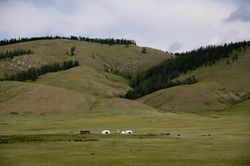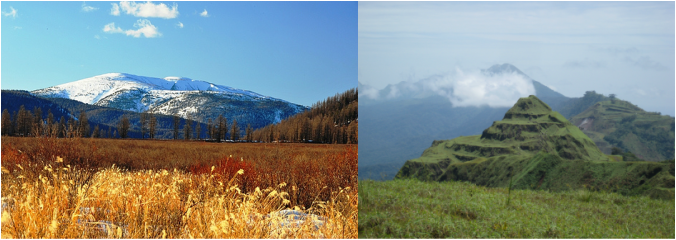A people without the knowledge of their past history, origin and culture is like a tree without roots. " - Marcus Garvey
When cultural heritage tourism is done right, it can help to protect a nation's natural and cultural treasures as well as improve the quality of life for residents and visitors alike. However, heritage tourism is an incremental process; one which requires both investments of financial means and a commitment of human resources including strong leadership.
With this being said, organizations such as the United Nations Educational, Scientific, and Cultural Organization or UNESCO, are actively working to protect these heritage and cultural areas all over the world. For more information about the UNESCO's efforts and how you can also make a stand towards protecting these heritage sites, check out their webpage at http://whc.unesco.org/en/danger/.
Mount NImba StricT Nature Reserve - An Oasis in Jeopardy
First, Mount Nimba Strict Nature Reserve has struggled to obtain permanent funding and support from local agencies. In fact, the Ivorian Office of Parks and Reserves (OIPR) and the Foundation for Parks and Reserves (FPRCI) have been seeking to establish a decree with the reserve for several years but the administration of the Reserve have yet to establish a formidable plan to implementing sustainable practices and procedures. Due to its lack of collaboration, Mount Nimba Strict Nature Reserve has been threatened and now is a world heritage site in danger.
Secondly, Mount Nimba Strict Nature Reserve has been unable to balance the pressures from local economies and the ever increasing demands of tourism. As case in point the reserve is being threatened by increased pressure adjacent to the boundaries of the site. Such pressure stems from the neighboring populations because the need of land for agriculture and cattle breeding has strengthened the practice of clearing by fire. Moreover, these fires occur regularly, even in protected areas, thus constituting an important administrative challenge.
To make matters worse, tourism has not been a great source of assistance to the reserve. For instance, although the natural forests that cover the slopes of Nimba have not suffered much damage, the fauna has been the subject of very intense degradation due to the exploitation of tourism. Furthermore, the traffic of human interaction in the natural habitats of Mount Nimba have significantly influenced various ecosystems, so much that several species are either threatened or in danger of extinction. While the local economies of the reserve thrive on tourism, administration of the Mount Nimba Reserve has faced harsh criticism for too often succumbing to the temptations of tourism rather than actively working to preserve the natural habitats of this beloved oasis.
http://whc.unesco.org/en/list/155
Sacred Binder Mountain: Protected, Fortified, & Sustainable

Collaboration: Sacred Binder Mountain and its association with several international organizations demonstrate an outstanding example of an evolving sacred cultural landscape which, through sustainable land-use practices has helped this site evolved from prehistoric origins in harmony with its current natural landscapes.
Balance between the community and tourism: Today, many Mongolian herders live around the area of sacred Binder Mountain are still experiencing the culture, way of life, custom and traditional craftsmanship technique, traditional performing arts and festive events left by their ancestors. This lifestyle has influenced an influx of tourism. Although the local economies welcome an array tourists each year, many of the local tribes have implemented procedures as to limiting tourists from having full access to its sacred boundaries and practices. Such actions help the communities maintain the flow of tourism as well as preserving its ancestry.
Bringing the site and programs to life: The worshiping tradition and practices of sacred Binder Mountain and its surrounding sacred sites and associated monuments and cultural places represent a unique fusion between the religions of Shamanism and Tibetan Buddhism. With these religions, Binder Mountain comes to life as people come from all over the world to interchange with its abundant spiritual freedom and expression.
Focusing on authenticity and quality: Comparing sacred Binder Mountain with other sacred or worshiped mountains, there are several similar characteristics and cases. All of them reflect persistent and unique traditions of worship over the past several hundred years. Furthermore, all these sacred mountains represent a symbol of national identity and the spiritual homeland of those nations and countries and civilizations within which these sacred mountains are located. This is very true to Sacred Binder Mountain as well as it has a deep association with the nomadic people and their shamanistic beliefs which later became Mongolian Buddhism.
Efforts are taken to preserve and protect resources: By virtue of its isolated settings within the environment and its partial inclusion in a national strictly protected area, the Sacred Binder Mountain and have suffered little from human adverse impact over the years. Nevertheless effective efforts of conservation and preservation within its areas have helped Sacred Binder Mountain stay in its original form.
http://whc.unesco.org/en/tentativelists/5777/



 RSS Feed
RSS Feed
